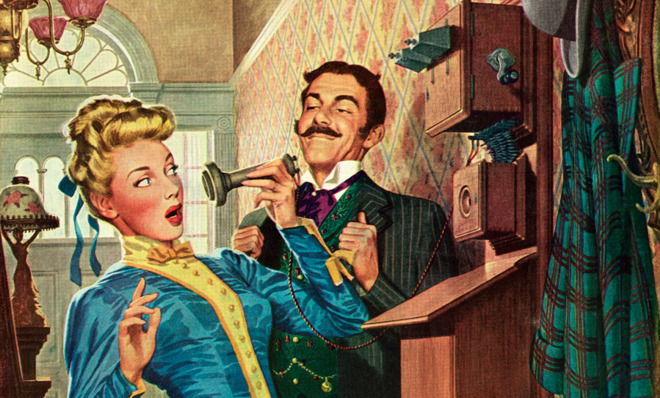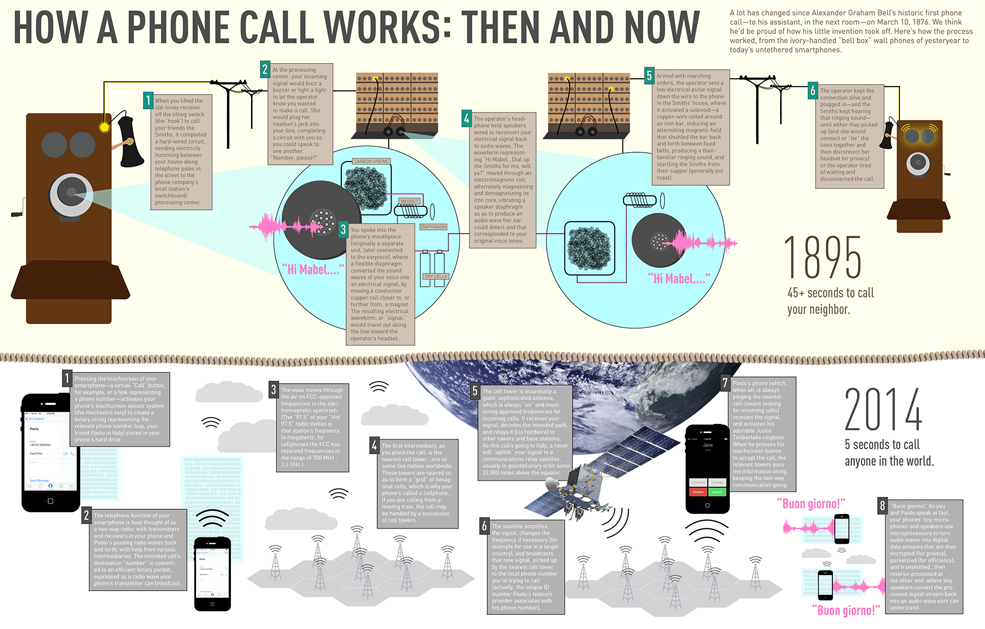What would using a telephone have been like in 1895?
"Number, please?"


One hundred and thirty-eight years ago this week — on March 10, 1876, to be exact — Alexander Graham Bell spoke the first words into a "tele-phone," as it was called, to his assistant Thomas Watson, positioned at a receiver in another room. "Mr. Watson!" Bell exclaimed in staccato bursts. "Come here! I want to see you!" And for decades, telephones looked like elaborate pieces of furniture, affixed to walls and hard-wired out to the street, and up and down the blocks to local-area switchboards. If you wanted to talk on the phone, you had to go stand next to a wall.
What a difference just over a century makes! Modern smartphones still require electric power to operate, a microphone and speaker to translate voices into signals, and a ringer of some type to make your party aware you’re calling. But beyond that, virtually everything has changed. Check out this infographic showing, from a scientific and technical perspective, what happened then and what happens now, every time you make a call.
The Week
Escape your echo chamber. Get the facts behind the news, plus analysis from multiple perspectives.

Sign up for The Week's Free Newsletters
From our morning news briefing to a weekly Good News Newsletter, get the best of The Week delivered directly to your inbox.
From our morning news briefing to a weekly Good News Newsletter, get the best of The Week delivered directly to your inbox.

More from World Science Festival...
A free daily email with the biggest news stories of the day – and the best features from TheWeek.com
-
 A long weekend in Fontainebleau
A long weekend in FontainebleauThe Week Recommends Less than an hour from Paris, this historic town is perfect for a short break
-
 Political cartoons for December 16
Political cartoons for December 16Cartoons Tuesday’s editorial cartoons include calibrating fonts, Christmas classics, and more
-
 Cryptocurrency and the future of politics
Cryptocurrency and the future of politicsIn The Spotlight From electoral campaigns to government investments, crypto is everywhere and looks like it’s here to stay